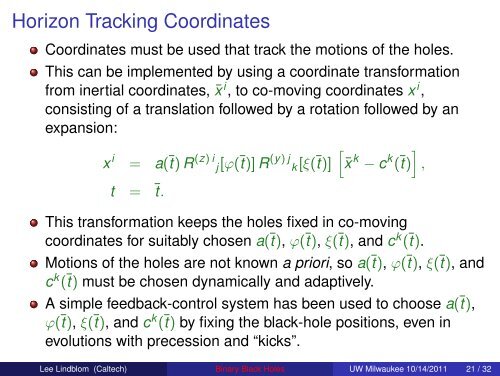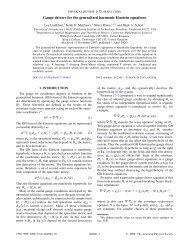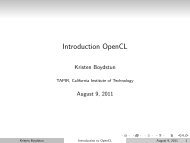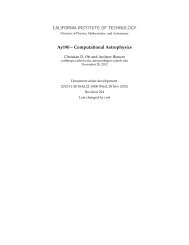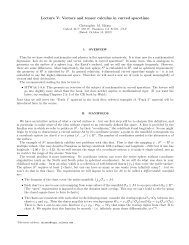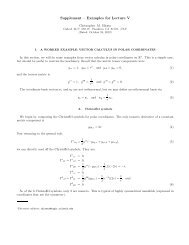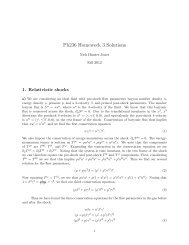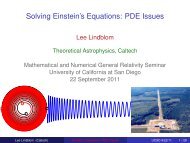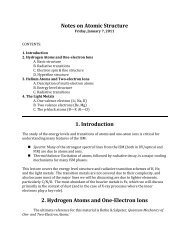Solving Einstein's Equations for Binary Black Hole Spacetimes
Solving Einstein's Equations for Binary Black Hole Spacetimes
Solving Einstein's Equations for Binary Black Hole Spacetimes
You also want an ePaper? Increase the reach of your titles
YUMPU automatically turns print PDFs into web optimized ePapers that Google loves.
Horizon Tracking Coordinates<br />
Coordinates must be used that track the motions of the holes.<br />
This can be implemented by using a coordinate trans<strong>for</strong>mation<br />
from inertial coordinates, ¯x i , to co-moving coordinates x i ,<br />
consisting of a translation followed by a rotation followed by an<br />
expansion:<br />
[ ]<br />
x i = a(¯t) R (z) i j[ϕ(¯t)] R (y) j k[ξ(¯t)] ¯x k − c k (¯t) ,<br />
t = ¯t.<br />
This trans<strong>for</strong>mation keeps the holes fixed in co-moving<br />
coordinates <strong>for</strong> suitably chosen a(¯t), ϕ(¯t), ξ(¯t), and c k (¯t).<br />
Motions of the holes are not known a priori, so a(¯t), ϕ(¯t), ξ(¯t), and<br />
c k (¯t) must be chosen dynamically and adaptively.<br />
A simple feedback-control system has been used to choose a(¯t),<br />
ϕ(¯t), ξ(¯t), and c k (¯t) by fixing the black-hole positions, even in<br />
evolutions with precession and “kicks”.<br />
Lee Lindblom (Caltech) <strong>Binary</strong> <strong>Black</strong> <strong>Hole</strong>s UW Milwaukee 10/14/2011 21 / 32


